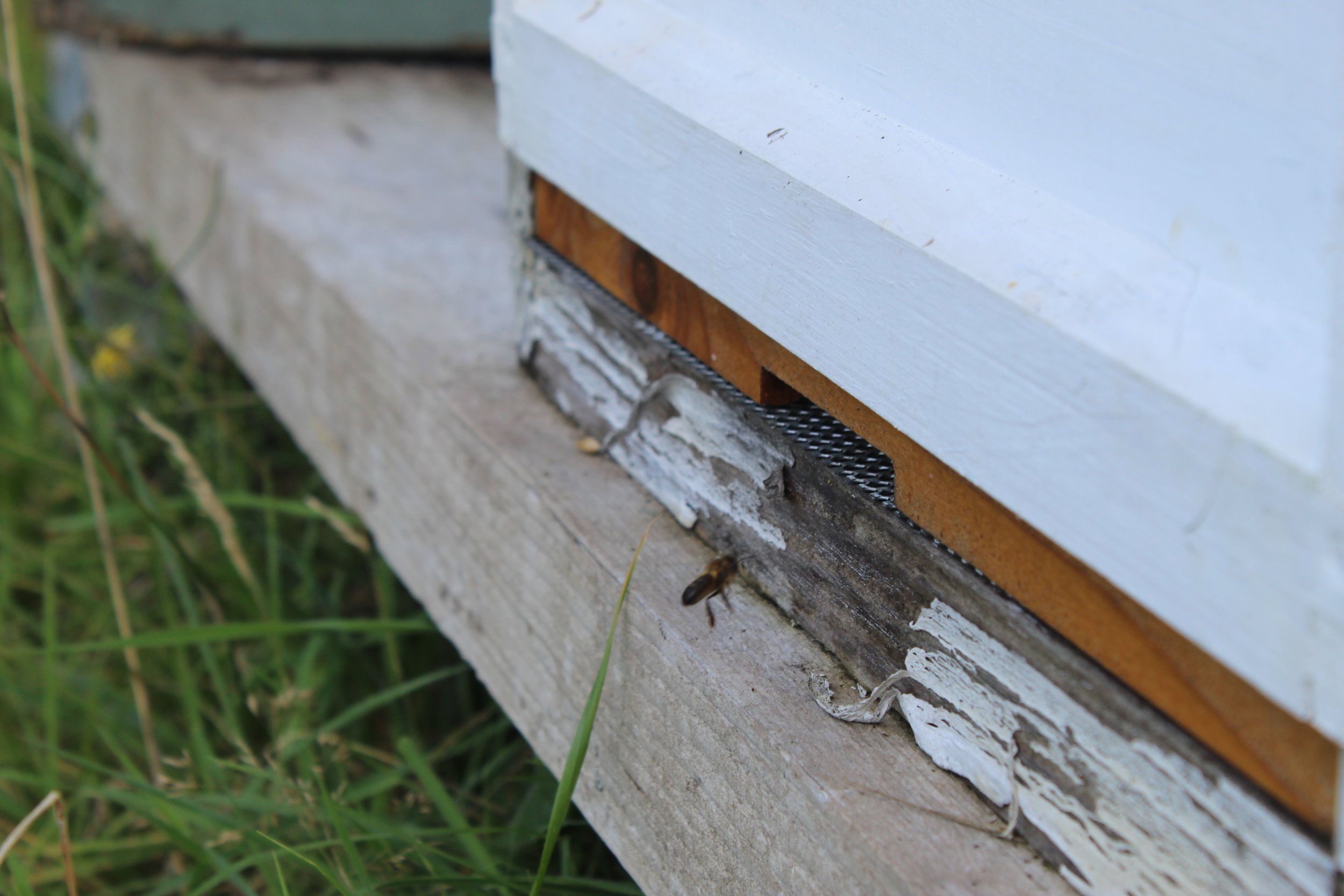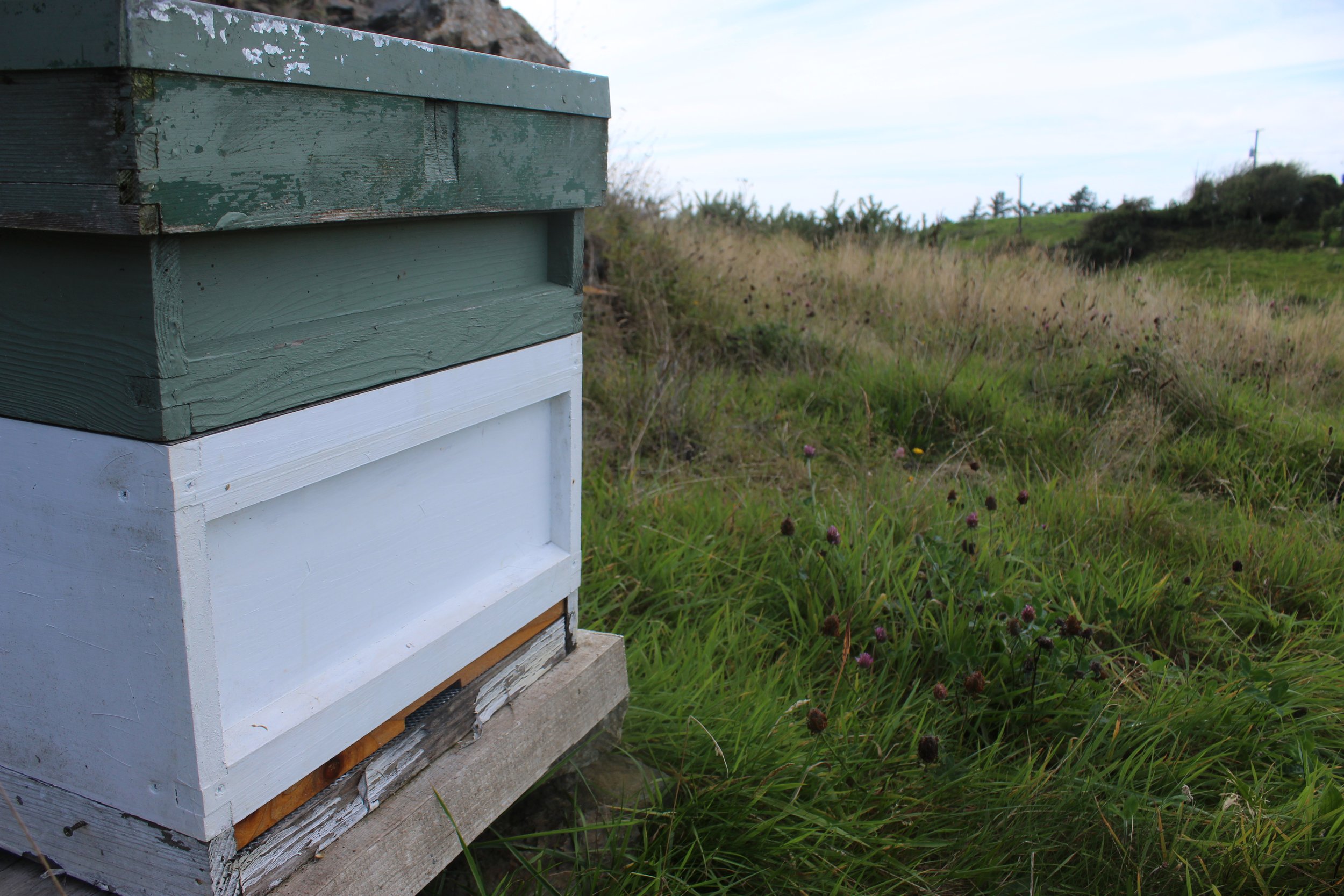Bees on Cloudforest One
In June 2022 we were excited to see our first Irish Honey Bee hives moving into Cloudforest One Lahinch (read the post here), and while it wasn’t the reason we installed the hives, we were delighted to get our first jars of honey in December. What we didn’t know then, was that unfortunately, our hive had gone queenless.
A Native Irish Honey Bee Entering Our First Hives On Cloudforest One
We don’t know why, and we don’t know precisely when - we think around August time. It can be difficult at first for the keeper to tell if the queen is gone or just resting. What we do know is that when a hive goes queenless, it cannot survive for long so their main priority is to replace her as soon as possible.
While the summer worker bees might only live for 40 to 60 days, the Autumn generation of nursery worker bees usually live for up to 6 months which enables them to overwinter - but their lifespan is shortened if they are out and about searching for food. Without a Queen producing eggs, the worker bees spend all their time foraging and making honey instead of raising the next generation of bees. Each hive usually averages about 50,000 honey bees, but a queenless hive slowly reduces in numbers as the older bees die off without being replaced.
Our Hives On CloudForest One
Our beekeeper could see that before the bees died, the hive had started to prepare a new queen to replace their lost matriarch. This process takes around 18 days or so and once the queen’s ready, she flies with her retinue to attract drones for mating. Whether it was due to the time of year, the wet weather, or any other number of possibilities, our hive didn’t succeed in getting the new queen mated this time. We’ll post more as we learn about how hives replace their queens over the coming weeks.
Without new worker bees to replace the older ones in our hive, the population aged and our precious bees eventually died out. Shockingly, this happens very regularly, and beekeepers expect to lose one in three honey bee colonies every year.
As you can imagine, everyone here in Cloudforests is devastated by the loss. So what are we doing about it? Well, naturally we want to replace our bees as soon as possible, and do what we can to make sure we don’t lose our entire colony again!
For now, the second hive has been relocated as it was needed elsewhere. We’re looking at a slight change of location on our Cloudforest One site to a more sheltered area. We’re also going to focus on the nearby food sources. For survival over winter, it’s important to have a good crop of ivy nearby - this is their main winter crop. We also want to make sure our hedgerows and the supply of year-round native wildflowers will support our honey bees, as well as the local solitary and bumblebee populations.
We’re also really excited to bring some amazing technology to the site as well with our RoboHives - this will allow us to remotely monitor the hives. We’ll be able to keep an eye on the inner temperature, humidity and weight of the hive, a counter keeping track of the number of bees, and we’ll also have a live video stream on the hive!
RoboHive Logo By Cloudforests
Aideen from the Native Irish Honey Bee Society told us recently that beekeepers often lie in bed at night worrying, “I wonder if they are OK”... hopefully once the RoboHive is up and running, our keeper will be able to get a bit more sleep at night!
We have opportunities for CoolPartners who want to get involved and support our mission to bring Native Irish Honey Bees to all our sites along Ireland’s Wild Atlantic Way - get in touch with us through the normal channels or by filling in the contact form below for more information.






